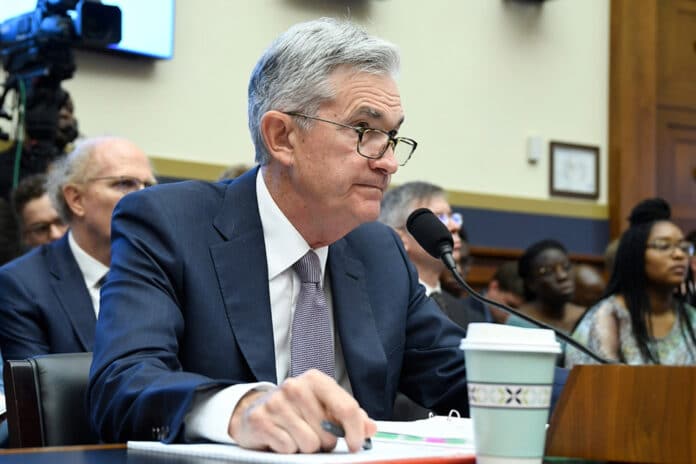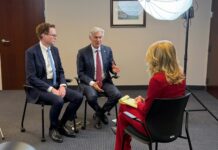
(Daily Caller News Foundation) — The Federal Reserve announced on Wednesday that it would not change its benchmark federal funds rate despite recent changes in inflation and slow economic growth.
![]()
The Fed’s decision not to change interest rates keeps the target range between 5.25% and 5.50%, the highest level since 2001, marking the seventh meeting in a row where the Fed chose not to adjust the rate, according to an announcement from the Fed following a meeting by the Federal Open Market Committee (FOMC). The federal funds rate has been set to its current level in an attempt to tame inflation, with the Fed’s preferred measure of inflation, the personal consumption expenditure index, rising 2.7% for the year and 0.3% in the month in April.
“The Committee judges that the risks to achieving its employment and inflation goals have moved toward better balance over the past year,” the Fed said in the announcement. “The economic outlook is uncertain, and the Committee remains highly attentive to inflation risks. In support of its goals, the Committee decided to maintain the target range for the federal funds rate at 5-1/4 to 5-1/2 percent.”
The Fed updated its future projection, with an average of board members now estimating that the rate will end the year at around 5.1%, equivalent to around one rate cut, according to the FOMC. The new projection differs from March’s projection of around three cuts.
The more broadly watched measure of inflation, the consumer price index, was released to the public for May just hours ahead of the Fed’s decision, remaining flat for the month and rising 3.3% on an annual basis, far higher than the Fed’s 2% target. The CPI has so far failed to drop below 3% since peaking at 9% in June 2022.
Amid higher interest rates, credit card delinquency rates over 90 days surged to 10.7% in the first quarter of 2024, higher than at any point during the COVID-19 pandemic, when many Americans were put out of work. The collective amount of debt Americans held in the first quarter totaled $17.69 trillion, increasing $184 billion from the previous quarter.
BREAKING: Prediction markets officially price-in 2 interest rate cuts this year after CPI inflation data.
The odds of no cuts have fallen from 33% to 24% over the last few minutes, according to @Kalshi.
Meanwhile, market implied odds of exactly 2 rate cuts have spiked from 21%… pic.twitter.com/tnxn6vMSHu
— The Kobeissi Letter (@KobeissiLetter) June 12, 2024
Slow economic growth in recent months has given some investors hope that the Fed will continue with its projection of cutting rates by the end of the year, with gross domestic product slowing down to just 1.3% in the first quarter of 2024, compared to 3.4% in the quarter before. Market odds show a majority of investors believe that the Fed will cut its federal funds range by 0.25% for the first time this cycle in September, according to CME Group’s FedWatch Tool.
Persistently high inflation and slow growth have sparked fears among economists that the economy is in a period of stagflation, which devastated the finances of many Americans during the 1970s and 1980s. Jerome Powell, chair of the Fed, pushed back against claims of stagflation in a press conference following May’s FOMC meeting, citing low unemployment and decelerating inflation.










